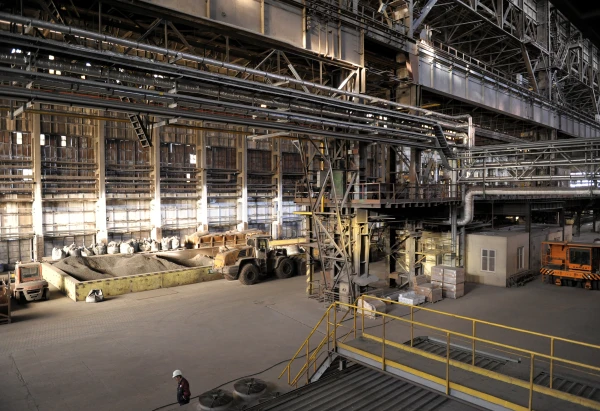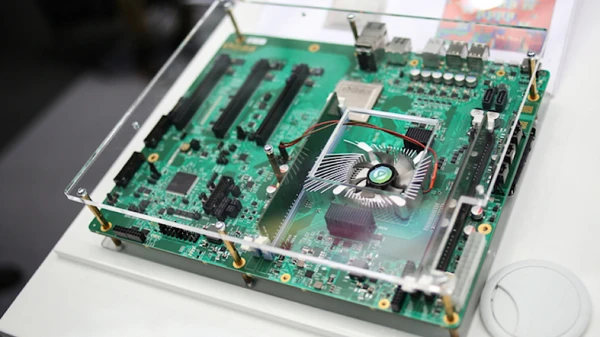
It is impossible not to compare today’s crazy valuations with the dot-com bubble at the turn of the century.
Bubble or golden bottom? Artificial intelligence could be both, writes Reuters.
It is quite possible that AI is the future of business and the broader economy; however, the extremely high stock prices driven by the hype surrounding it may still lead to a bubble ready to burst.
Investors cannot shake off the concern that the valuations of tech companies are inflated. What if AI does not live up to the hype, if the massive investments in advanced microchips, as well as in the infrastructure and energy needed to meet high data processing demands, do not pay off?
In the coming months, many columns will be written about the AI boom, and most authors will likely conclude that it is too early to judge its success or failure.
Some early studies indicate that companies are not yet generating significant revenues from AI, even though it is estimated that $3 trillion will be invested in this technology over the next three years.
However, returns on investments always take time.
As for the consensus opinion? Perhaps it makes sense to ask the artificial intelligence itself.
In response to the question "Is AI a bubble?", Google’s AI Mode chatbot concluded: "While the core AI technology is considered a genuine and potentially revolutionary event, there is significant debate about whether current market valuations are sustainable or if the sector is experiencing a bubble-like period of excessive enthusiasm and speculation."
Productivity gains and revenue growth in the coming years will ultimately determine the value of AI, the system diplomatically adds, clearly not wanting to present a picture that would jeopardize its own existence.
It may be more useful to look at the lessons from past bubbles. History shows that revolutionary technologies typically attract a large influx of capital, but not all of that investment is "smart money".
Therefore, even if the technology persists and ultimately changes the world, some of the most expensive stocks during bubble years may turn out to be problematic. Companies may not go bankrupt, but if the bubble bursts, it could take years for stock valuations to return to super-high levels, if they ever do.
In this vein, Michael Burry, known for short selling, evaluates today’s favorites in the AI sector - Nvidia and Palantir. He does not consider these companies bad, but simply thinks their valuations are inflated.
It is impossible not to compare today’s crazy valuations with the dot-com bubble at the turn of the century and the hype in the technology, media, and telecommunications (TMT) sectors, which ended in a spectacular crash in the early 2000s.
Those who are optimistic about AI constantly cite the long-term results of investors who bought shares of some companies that survived the TMT sector crash during the height of the hype.
Ultimately, if you were lucky enough to buy shares of Amazon, Apple, or Microsoft at peaks around the time of the dot-com bubble, you still achieved impressive returns today.
However, from the moment the bubble burst, you would have had to wait up to seven years just to break even.
And what do the bears remember? AJ Bell's investment director Russ Mold specializes in the giant Cisco - one of the brightest stars of the late 1990s. The company's stock jumped from $2 per share in 1995 to over $80 at the peak of the bubble in 2000, doubling in price in just one year in 1999.
After that, within a year and a half, Cisco’s stock fell back to $8.
Cisco subsequently performed well, Mold notes. The company’s net income is projected to exceed $11 billion in 2025 on sales of nearly $57 billion.
However, its stock price has still not recovered to the peak of March 2000, when the company’s market capitalization of $550 billion was 200 times its annual profit. Although Cisco’s stock price has doubled over the past 10 years, it remains 10% below the intraday high reached at the beginning of the new millennium.
Mold believes that Cisco's history serves as a lesson about how difficult it can be to meet expectations in the short term, even if companies succeed in the long term.
And importantly, it is a reminder that inflated stock valuations will not protect investors if growth rates suddenly slow and sales disappoint. Investors in Palantir's stock should pay special attention to this: currently, the company's price-to-earnings ratio is 216.
Perhaps Nvidia best embodies the dilemma facing investors in the tech sector today.
On one hand, the market capitalization of the chipmaker, which recently exceeded $5 trillion, accounts for 16% of U.S. GDP, compared to 5% for Cisco at its peak.
However, on the other hand, Nvidia's valuation appears justified.
"Compared to Nvidia's current growth rates, Cisco's metrics look ridiculous, and such margins and returns on capital as the silicon chip maker has never existed for Cisco," Mold wrote, adding that Nvidia's price-to-earnings ratio is about 33.
So can today’s tech sector investors sleep soundly?
It depends on the investment period.
While the dot-com bubble looks like a small blip on a long-term historical chart of the Nasdaq, the period of steadily declining markets that followed lasted nearly two years, and it took the index about 15 years to reach its peak again.
Stocks always go up, gurus claim, and that is true - provided you plan to hold them forever.













Leave a comment